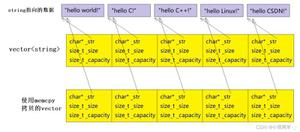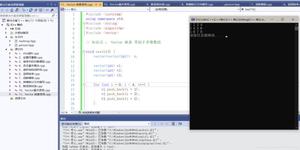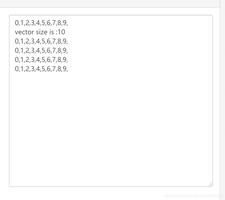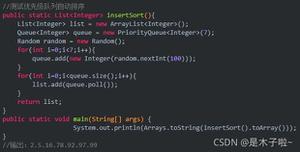SpringMVC01DispatchServlet的初始化过程

DispatcherServlet继承了HttpServletBean类,其中含有初始化方法init(),该方法的代码如下:
/** * Map config parameters onto bean properties of this servlet, and
* invoke subclass initialization.
* @throws ServletException if bean properties are invalid (or required
* properties are missing), or if subclass initialization fails.
*/
@Override
public final void init() throws ServletException {
// Set bean properties from init parameters.
PropertyValues pvs = new ServletConfigPropertyValues(getServletConfig(), this.requiredProperties);
if (!pvs.isEmpty()) {
try {
BeanWrapper bw = PropertyAccessorFactory.forBeanPropertyAccess(this);
ResourceLoader resourceLoader = new ServletContextResourceLoader(getServletContext());
bw.registerCustomEditor(Resource.class, new ResourceEditor(resourceLoader, getEnvironment()));
initBeanWrapper(bw);
bw.setPropertyValues(pvs, true);
}
catch (BeansException ex) {
if (logger.isErrorEnabled()) {
logger.error("Failed to set bean properties on servlet "" + getServletName() + """, ex);
}
throw ex;
}
}
// Let subclasses do whatever initialization they like.
initServletBean();
}
该方法是获取web.xml中配置的属性参数的,并将这些属性设置到DispatcherServlet中;init()方法中还包含一个模板方法initServletBean(),该方法需要其子类去实现。
从上图中可以看到,HttpServletBean类的子类是FrameworkServlet,这里实现了模板方法initServletBean(),代码如下:
/** * Overridden method of {@link HttpServletBean}, invoked after any bean properties
* have been set. Creates this servlet"s WebApplicationContext.
*/
@Override
protected final void initServletBean() throws ServletException {
getServletContext().log("Initializing Spring " + getClass().getSimpleName() + " "" + getServletName() + """);
if (logger.isInfoEnabled()) {
logger.info("Initializing Servlet "" + getServletName() + """);
}
long startTime = System.currentTimeMillis();
try {
this.webApplicationContext = initWebApplicationContext();
initFrameworkServlet();
}
catch (ServletException | RuntimeException ex) {
logger.error("Context initialization failed", ex);
throw ex;
}
// 省略其他代码
}
可以看到initServletBean()方法的核心是初始化WebApplicationContext对象,即是initWebApplicationContext()方法。
FrameworkServlet.initWebApplicationContext()代码如下:
/** * Initialize and publish the WebApplicationContext for this servlet.
* <p>Delegates to {@link #createWebApplicationContext} for actual creation
* of the context. Can be overridden in subclasses.
* @return the WebApplicationContext instance
* @see #FrameworkServlet(WebApplicationContext)
* @see #setContextClass
* @see #setContextConfigLocation
*/
protected WebApplicationContext initWebApplicationContext() {
WebApplicationContext rootContext =
WebApplicationContextUtils.getWebApplicationContext(getServletContext());
WebApplicationContext wac = null;
if (this.webApplicationContext != null) {
// A context instance was injected at construction time -> use it
wac = this.webApplicationContext;
if (wac instanceof ConfigurableWebApplicationContext) {
ConfigurableWebApplicationContext cwac = (ConfigurableWebApplicationContext) wac;
if (!cwac.isActive()) {
// The context has not yet been refreshed -> provide services such as
// setting the parent context, setting the application context id, etc
if (cwac.getParent() == null) {
// The context instance was injected without an explicit parent -> set
// the root application context (if any; may be null) as the parent
cwac.setParent(rootContext);
}
configureAndRefreshWebApplicationContext(cwac);
}
}
}
if (wac == null) {
// No context instance was injected at construction time -> see if one
// has been registered in the servlet context. If one exists, it is assumed
// that the parent context (if any) has already been set and that the
// user has performed any initialization such as setting the context id
wac = findWebApplicationContext();
}
if (wac == null) {
// No context instance is defined for this servlet -> create a local one
wac = createWebApplicationContext(rootContext);
}
if (!this.refreshEventReceived) {
// Either the context is not a ConfigurableApplicationContext with refresh
// support or the context injected at construction time had already been
// refreshed -> trigger initial onRefresh manually here.
synchronized (this.onRefreshMonitor) {
onRefresh(wac);
}
}
if (this.publishContext) {
// Publish the context as a servlet context attribute.
String attrName = getServletContextAttributeName();
getServletContext().setAttribute(attrName, wac);
}
return wac;
}
这个方法比较长,这里将分析最重要的createWebApplicationContext()方法。createWebApplicationContext()方法是创建WebApplicationContext对象的,进入该方法,发现其调用了FrameworkServlet的重载方法createWebApplicationContext(ApplicationContext parent),重载方法的代码如下:
/** * Instantiate the WebApplicationContext for this servlet, either a default
* {@link org.springframework.web.context.support.XmlWebApplicationContext}
* or a {@link #setContextClass custom context class}, if set.
* <p>This implementation expects custom contexts to implement the
* {@link org.springframework.web.context.ConfigurableWebApplicationContext}
* interface. Can be overridden in subclasses.
* <p>Do not forget to register this servlet instance as application listener on the
* created context (for triggering its {@link #onRefresh callback}, and to call
* {@link org.springframework.context.ConfigurableApplicationContext#refresh()}
* before returning the context instance.
* @param parent the parent ApplicationContext to use, or {@code null} if none
* @return the WebApplicationContext for this servlet
* @see org.springframework.web.context.support.XmlWebApplicationContext
*/
protected WebApplicationContext createWebApplicationContext(@Nullable ApplicationContext parent) {
Class<?> contextClass = getContextClass();
if (!ConfigurableWebApplicationContext.class.isAssignableFrom(contextClass)) {
throw new ApplicationContextException(
"Fatal initialization error in servlet with name "" + getServletName() +
"": custom WebApplicationContext class [" + contextClass.getName() +
"] is not of type ConfigurableWebApplicationContext");
}
ConfigurableWebApplicationContext wac =
(ConfigurableWebApplicationContext) BeanUtils.instantiateClass(contextClass);
wac.setEnvironment(getEnvironment());
wac.setParent(parent);
String configLocation = getContextConfigLocation();
if (configLocation != null) {
wac.setConfigLocation(configLocation);
}
configureAndRefreshWebApplicationContext(wac);
return wac;
}
在该方法中使用BeanUtils类的instantiateClass()方法通过反射创建了web上下文对象,即ConfigurableWebApplicationContext对象,并且将web.xml中配置的contextConfigLocation元素设置到ConfigurableWebApplicationContext对象中。最后执行刷新web应用上下文的方法configureAndRefreshWebApplicationContext():
protected void configureAndRefreshWebApplicationContext(ConfigurableWebApplicationContext wac) { if (ObjectUtils.identityToString(wac).equals(wac.getId())) {
// The application context id is still set to its original default value
// -> assign a more useful id based on available information
if (this.contextId != null) {
wac.setId(this.contextId);
}
else {
// Generate default id...
wac.setId(ConfigurableWebApplicationContext.APPLICATION_CONTEXT_ID_PREFIX +
ObjectUtils.getDisplayString(getServletContext().getContextPath()) + "/" + getServletName());
}
}
wac.setServletContext(getServletContext());
wac.setServletConfig(getServletConfig());
wac.setNamespace(getNamespace());
wac.addApplicationListener(new SourceFilteringListener(wac, new ContextRefreshListener()));
// The wac environment"s #initPropertySources will be called in any case when the context
// is refreshed; do it eagerly here to ensure servlet property sources are in place for
// use in any post-processing or initialization that occurs below prior to #refresh
ConfigurableEnvironment env = wac.getEnvironment();
if (env instanceof ConfigurableWebEnvironment) {
((ConfigurableWebEnvironment) env).initPropertySources(getServletContext(), getServletConfig());
}
postProcessWebApplicationContext(wac);
applyInitializers(wac);
wac.refresh();
}
该方法的最后一行ConfigurableWebApplicationContext.refresh()方法会进入到IoC容器的初始化过程,具体细节请参考IoC容器的代码解析,此处不再赘述。
回到FrameworkServlet的initWebApplicationContext()方法,当web应用上下文对象创建完后,将会继续执行onRefresh()方法。
if (!this.refreshEventReceived) { // Either the context is not a ConfigurableApplicationContext with refresh
// support or the context injected at construction time had already been
// refreshed -> trigger initial onRefresh manually here.
synchronized (this.onRefreshMonitor) {
onRefresh(wac);
}
}
onRefresh()方法由DispatcherServlet类实现:
/** * This implementation calls {@link #initStrategies}.
*/
@Override
protected void onRefresh(ApplicationContext context) {
initStrategies(context);
}
onRefresh()方法中只有一行代码,调用initStrategies()方法:
/** * Initialize the strategy objects that this servlet uses.
* <p>May be overridden in subclasses in order to initialize further strategy objects.
*/
protected void initStrategies(ApplicationContext context) {
// 初始化文件上传处理器
initMultipartResolver(context);
// 初始化本地化处理器
initLocaleResolver(context);
// 初始化主题处理器
initThemeResolver(context);
// 初始化处理器映射(用来保存Controller中配置的RequestMapping与Method映射关系)
initHandlerMappings(context);
// 初始化处理器适配器(用来动态匹配Method参数,包括类转换、动态映射)
initHandlerAdapters(context);
// 初始化异常处理器
initHandlerExceptionResolvers(context);
// 初始化请求至视图名转换
initRequestToViewNameTranslator(context);
// 初始化视图解析器
initViewResolvers(context);
// 初始化 flash 映射管理器
initFlashMapManager(context);
}
初始化策略的方法initStrategies()在不指定个性化配置文件的情况下,会使用默认的配置进行初始化,默认配置位于DispatcherServlet.properties中:
# Default implementation classes for DispatcherServlet"s strategy interfaces.# Used as fallback when no matching beans are found in the DispatcherServlet context.
# Not meant to be customized by application developers.
org.springframework.web.servlet.LocaleResolver=org.springframework.web.servlet.i18n.AcceptHeaderLocaleResolver
org.springframework.web.servlet.ThemeResolver=org.springframework.web.servlet.theme.FixedThemeResolver
org.springframework.web.servlet.HandlerMapping=org.springframework.web.servlet.handler.BeanNameUrlHandlerMapping,
org.springframework.web.servlet.mvc.method.annotation.RequestMappingHandlerMapping
org.springframework.web.servlet.HandlerAdapter=org.springframework.web.servlet.mvc.HttpRequestHandlerAdapter,
org.springframework.web.servlet.mvc.SimpleControllerHandlerAdapter,
org.springframework.web.servlet.mvc.method.annotation.RequestMappingHandlerAdapter
org.springframework.web.servlet.HandlerExceptionResolver=org.springframework.web.servlet.mvc.method.annotation.ExceptionHandlerExceptionResolver,
org.springframework.web.servlet.mvc.annotation.ResponseStatusExceptionResolver,
org.springframework.web.servlet.mvc.support.DefaultHandlerExceptionResolver
org.springframework.web.servlet.RequestToViewNameTranslator=org.springframework.web.servlet.view.DefaultRequestToViewNameTranslator
org.springframework.web.servlet.ViewResolver=org.springframework.web.servlet.view.InternalResourceViewResolver
org.springframework.web.servlet.FlashMapManager=org.springframework.web.servlet.support.SessionFlashMapManager
从DispatcherServlet.properties默认配置策略中可以看到,其中对每种处理器配置了默认的实现,即本地化处理器LocaleResolver默认使用的是AcceptHeaderLocaleResolver。初始化各种处理器的功能已经通过注释的形式initStrategies()方法中,可进入方法内看具体实现。
以上是 SpringMVC01DispatchServlet的初始化过程 的全部内容, 来源链接: utcz.com/z/513240.html








